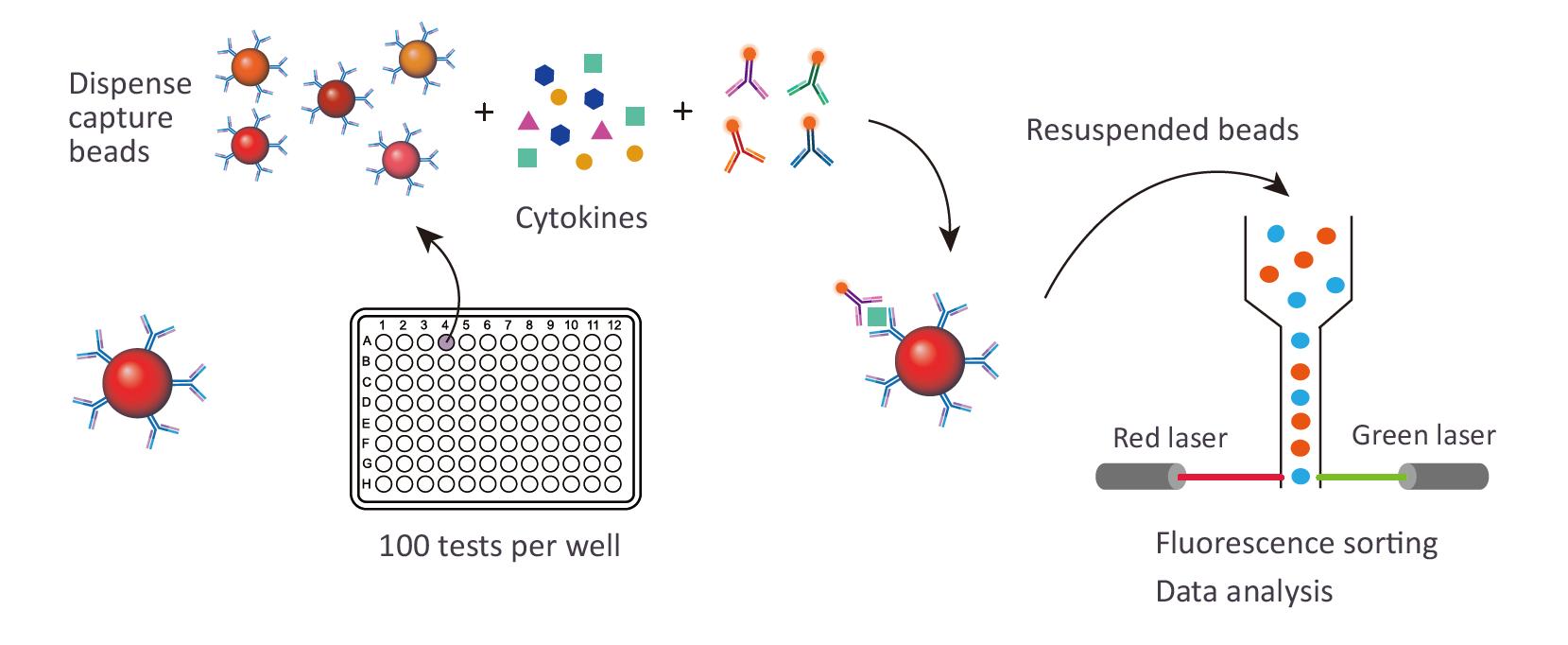Description
The complement system is a protein response system with sophisticated regulatory mechanisms widely present on the surface of serum, tissue fluid and cell membranes, including more than 30 components, mainly produced by hepatocytes and macrophages.
Complement plays a variety of biological functions: 1) Complement-dependent cytotoxicity (CDC): C5b6789n is involved in complement-dependent cytotoxicity and contributes to resistance against bacteria, viruses, parasites, and tumors; 2) Opsonization: C3b, C4b, iC3b and other fragments bind directly to the surface of bacteria or granular material and bind to the corresponding complement receptors on the surface of phagocytes and mediates phagocytosis; 3) Inflammatory mediator action: allergenic toxins (C3a, C4a, C5a) degranulate mast cells and basophils; 4) Removal of immune complexes, immune adherence (immune adherence): C3b binds IC, while adhering to CR1+ erythrocytes and platelets, and transports IC to the liver and spleen for removal by macrophages.
There are three activation pathways in the complement system:
The classical pathway is activated by the antigen-antibody complex. The activator binds to C1q and sequentially activates C1r, C1s, C4, C2, and C3, forming a cascade of enzymatic reactions between C3 convertase (C4b2a) and C5 convertase (C4b2a3b).
Alternative pathway does not depend on antibodies but is activated directly by microorganisms or exogenous foreign substances (bacteria, endotoxin, yeast polysaccharides, dextran, etc.) to activate C3, and with the participation of B-factor, D-factor and preparin (P), the process of forming C3 convertase (C3bBbP) and C5 convertase (C3bBb3b) initiates cascade enzymatic reactions.
The lectin pathway consists of direct recognition of the pathogen surface sugar structure (PAMP) by mannose-binding lectin (MBL) or ficosin (FCN) in plasma, which sequentially activates MASP, C4, C2, and C3. The cascade enzymatic process of C3 convertase and C5 convertase is formed in the same way as in the classical pathway.
Creative Proteomics offers the Luminex Human Complement Factor 7-Plex/8-Plex Panel analysis service to help researchers quantify the levels of complement factors in the complement system, analyze changes in complement content in different physiological/pathological settings, and study their mechanisms of action. Our panels are based on Luminex xMAP technology, which enables simultaneous quantification of multiple analytes with ideal speed and sensitivity, significantly increasing productivity and saving sample volume.
Detection Method
Magnetic bead-based Luminex multiplex assay
Species
Human
Analytes Detected
| Species | Specification | Protein Targets | Price |
|---|---|---|---|
| Human | Human Complement Factor 7-Plex Panel | C1q, C3, C3b, C4, FactorB, FactorH, Properdin | +Inquiry |
| Human | Human Complement Factor 8-plex Panel | Adipson/FactorD, C2, C4b, C5, C5a, C9, Factor I, Mannose-bindinglectin (MBL) | +Inquiry |
Service Features
- 96-well plate design for batch detection of multiplexed factors up to 80 samples
- High sensitivity, as low as pg/mL
- Multi-factor assays performed with 50 μL liquid sample and 200 μg total protein
- Suitable for serum/plasma, culture supernatants, cells, tissue lysates
- Maximized information in a single sample and cross-analysis allowed between analytes
- Run your assay in just 3-5 hours
- Mass-calibrated standards for consistent results with every new lot of material

Suggested Application
- Multiplexed protein assays
- Relative protein expression assays
- Detection of cytokine expression patterns
- Biomarker screening
- Identification of key factors
- Confirmation of biological processes



